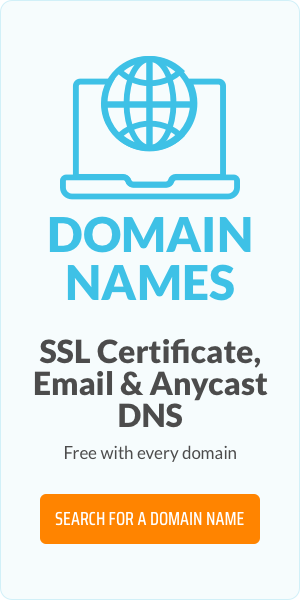Premium Domain Names: Everything You Need to Know

A premium domain name is a high-value domain that registries set aside due to its potential demand and profitability. These domains are typically short, memorable, and keyword-rich, making them highly desirable for businesses. But how do registries determine which domains become premium, and what does that mean for you? Let’s break it down.
What are premium domain names?
When launching a new generic top-level domain (gTLD), registries can reserve certain domain names they expect to be in high demand. These names are categorized as premium domains and are withheld from general availability to create exclusivity and drive interest.
Not all gTLD registries offer premium domains, but those that do strategically limit availability - sometimes holding back hundreds or even thousands of domain names to control pricing and demand.
How do registries sell premium domains?
Registries follow two primary strategies when offering premium domain names:
Game plan 1 - The high stakes action
This is the most exclusive and least common strategy. Registries withhold high-value domains indefinitely and later auction them via third-party platforms.
- These domains appear as unavailable when searched.
- They are eventually released through private or public auctions, often after the initial launch period.
- This delay increases demand, driving up bidding prices.
Historically, some registries have held premium domain names for years before releasing them, creating scarcity and maximizing profits.
Game Plan 2: Direct sales & auctions based on demand
This method is more common and transparent, allowing buyers to identify and purchase premium domain names directly.
Approach 2a: Real-time registration
- Premium domains are available during the Sunrise (Trademark Holders) and Landrush periods.
- Domains are registered on a first-come, first-served basis using EPP (Extensible Provisioning Protocol)—a system that enables registrars and registries to communicate efficiently.
- No auctions are involved. However, trademark owners must register their domains via the Trademark Clearinghouse to secure priority rights.
Approach 2b: End-date allocation & auctions
- Registries queue premium domain requests until the end of the launch period.
- If multiple parties apply for the same domain, an auction is triggered.
- If only one applicant exists, they receive the domain automatically without an auction.
This model ensures that high-value domains go to the highest bidder, while less-contested names are granted to individual applicants.
Who benefits from premium domains?
Premium domain names offer significant advantages for businesses and individuals looking to build a strong online identity.
- Brand Owners: Those who missed their opportunity during the initial ICANN application phase can still acquire their desired domain at a fraction of the $185,000 ICANN application fee.
- Startups & Businesses: A premium domain enhances credibility, improves SEO rankings, and makes a website easier to remember.
- Investors: Domain flipping is a lucrative business, with some premium domains reselling for six or seven figures.
Restricted domains: Are there any other domain names I can’t register?
- ICANN states that the word ‘example’ should only be made available for use in technical and software documentation; to avoid naming conflicts.
- Two-character domain names aren’t allowed, to avoid confusion with country codes. (Recently, ICANN’s opened a comments period to discuss proposed amendments to this restriction.)
- WWW, RDDS, WHOIS, and NIC are only allowed to be used by the registries in connection with the operation of their new domain(s).
- There are country and territory names withheld along with names referencing intergovernmental organisations; for more information you can check out ICANN’s Registry Agreement. Names relating to the International Olympic Committee, the International Red Cross, and the Red Crescent Movement are also reserved.
Name collision: what happens if a domain is blocked?
Name collision occurs when a new domain conflicts with an existing internal network domain (e.g., intranet domains used by corporations).
- If your desired domain is on ICANN’s name collision list, the registry may block its registration.
- As thousands of new gTLDs emerge, the likelihood of name collisions increases.
- Registrars like EuroDNS notify customers before registration to prevent conflicts and reduce disappointment.
EuroDNS & Premium Domain Name Management
Registries use registrars, such as EuroDNS, as the conduit to market for their domains. If we have access to the collision lists or reserved premium names, we’re able to let our customers know at the beginning of their registration and reduce disappointment further down the process.
It's a complicated process so please let us know if you have any more questions.
Bonus info for domain nerds: ICANN's new gTLD Registry Agreement
ICANN (in charge of the Internet), state in section 3.2 of the new gTLD Registry Agreement that registries may, “activate in the DNS at all levels up to one hundred names necessary for the operation or the promotion of the TLD.” That’s to say, they can withhold them. But, in section 3.3 it says that registries may, “withhold from registration or allocate to Registry Operator names at all levels...”. The ambiguity of how many may be reserved allows registries to interpret as they wish.
Love them or hate them - premium domain names
Since publishing this post I've written another explaining how the high price of premium domain names is sometimes, worth it. Take a look at what premium domain names can bring to your website, and you might just change your mind.
